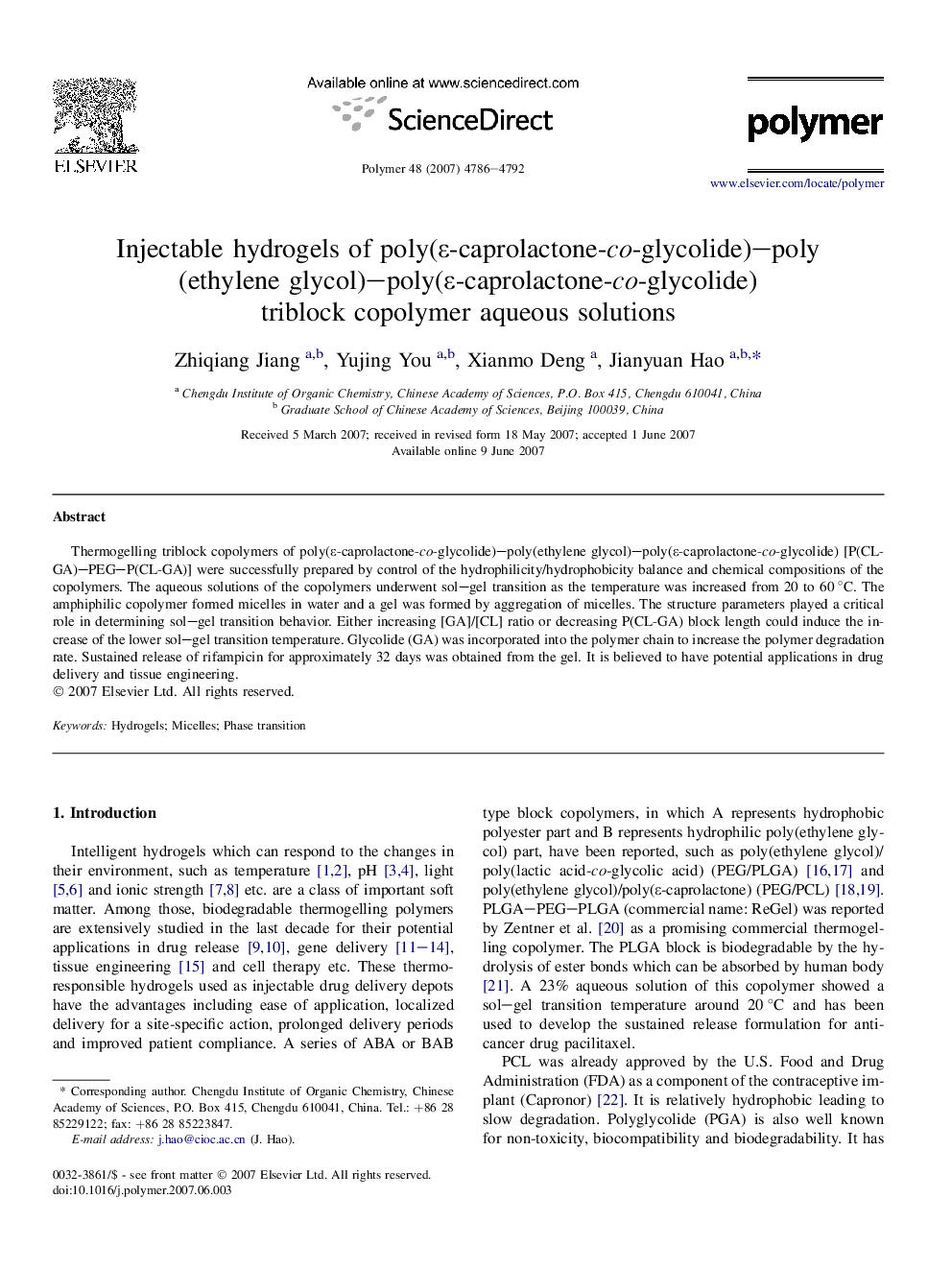| Article ID | Journal | Published Year | Pages | File Type |
|---|---|---|---|---|
| 5185772 | Polymer | 2007 | 7 Pages |
Thermogelling triblock copolymers of poly(É-caprolactone-co-glycolide)-poly(ethylene glycol)-poly(É-caprolactone-co-glycolide) [P(CL-GA)-PEG-P(CL-GA)] were successfully prepared by control of the hydrophilicity/hydrophobicity balance and chemical compositions of the copolymers. The aqueous solutions of the copolymers underwent sol-gel transition as the temperature was increased from 20 to 60 °C. The amphiphilic copolymer formed micelles in water and a gel was formed by aggregation of micelles. The structure parameters played a critical role in determining sol-gel transition behavior. Either increasing [GA]/[CL] ratio or decreasing P(CL-GA) block length could induce the increase of the lower sol-gel transition temperature. Glycolide (GA) was incorporated into the polymer chain to increase the polymer degradation rate. Sustained release of rifampicin for approximately 32 days was obtained from the gel. It is believed to have potential applications in drug delivery and tissue engineering.
